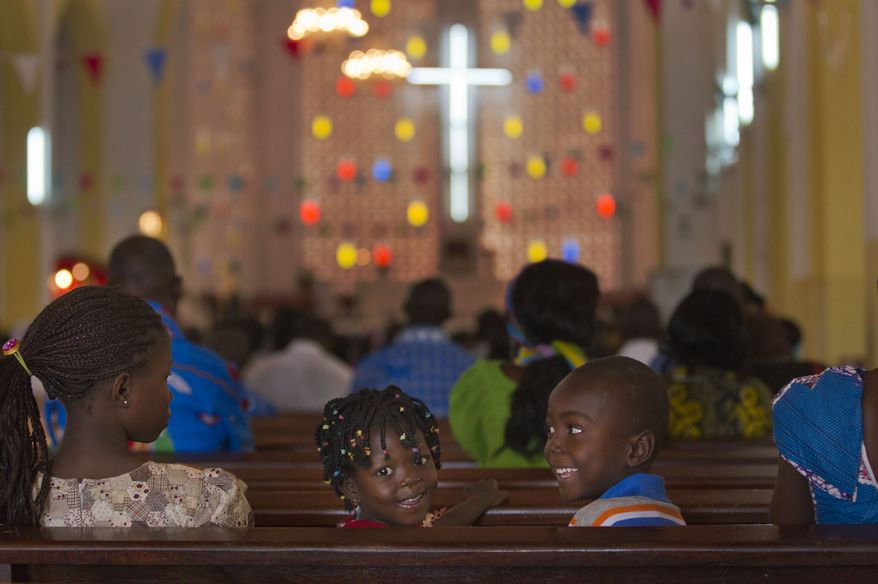I’ve fielded several questions this week on the practicality of having all ages in corporate worship together. While some of the questions pertained to older generations participating in church, most of them were focused on the challenge of having children in the church service. But after conversing for a bit, the basic need wasn’t to be convinced that children should be there at some point (that reconciled fairly quickly after some theological, developmental, and sociological evidences of the benefits of intergenerational worship); the bigger felt need was just for some practical and simple ways to make it possible for children to be integrated into the service.
Our traditional service structures often make it difficult to extend the hand of welcome to the next generation and it can be difficult to maneuver within those confines and find ways of incorporating all generations.
With that in mind, here are some practical tips and tools for Intergenerational Worship Services that might be useful for your faith community. I’ve shared these in the past and have had a lot of great feedback from multiple churches and denominations. I’d love to hear what your church is doing to make room for all ages to find a space to worship together.
1. Kid’s Worship Team – This team doesn’t necessary lead “singing” but they worship through hospitality (holding doors, handing out bulletins, etc), prayer (they go forward during prayer time and pray for themselves and others) and generosity (they take up the communion and pray over it).
For our team, the kids followed a weekly schedule, just like the adult worship team, and if they missed their Sunday, they had to get someone to take their spot. They also had to go through a training on worship with me before they could serve.
2. Sermon Notes – There are a lot of great templates out there for sermon notes and for older kids, it’s a great way to keep them involved with the service. In one church, if a child completed their sermon notes, they could get something out of a treasure box and the completed form was given back to their parents so the parents could have a follow-up conversation with their kids at home.

3. Call Out the Kids – Kids love to get attention and they love when they get to be drawn into “adult” things like the sermon. We often asked whoever was speaking to at some point in the sermon just say something like, “Hey kids, have you ever seen this?” or something else that would be appropriate to the text to help draw the kids into the story. It’s amazing how just that little comment really drew them in and helped redirect their attention to the service.
4. Interactive Teaching and Learning – Anything interactive is great! One of the ways our current church engages the kids is if there is a topic that involves a story from the Bible, the pastor will have the kids help act out the story. Everyone loves it – it’s spontaneous so things definitely go wrong, but the whole congregation gets involved and no one forgets the Scripture we studied that week.
5. Busy Bags – Busy bags get a bad rap, mostly because people don’t understand the developmental science behind them. Have “busy bags” but explain to parents and other church members that these activities aren’t intended to distract the kids but rather to help the kids use all of their developing senses; studies show if their hands and eyes are busy, their ears will be listening.
Quiet activities like lacing cards, stickers scenes, foam craft kits, beads and pipe cleaners, small puzzles and coloring are all great ways to engage your kinesthetic and visual learners.
6. Pew Boxes or Worship Boxes – Similar to busy bags, these boxes can be placed underneath chairs or pews and filled with quiet activities and books for kids to use during worship services. I love the ones put together by Traci Smith and outlined here
6. Active Involvement – The difference between “having kids in Big Church” and welcoming kids into corporate worship lies basically in participation. Are children being invited to actively participate or passively observe? Inviting children and youth to be part of the order of worship has incredible sway in creating a sense of inclusion and welcome.
Children and youth can read Scripture, say the benediction, lead a song (doesn’t always have to have actions – it can just be a song that they like – my son loves, “No Longer Slaves” and can’t wait to lead it), and pray. Being involved signals that we have a place in the congregation – we are a part of something bigger – and everyone needs to know that truth.
For more information about
- Kids in Worship
- Determining which Type of Family Ministry model works best for your church
- Discipleship in Intergenerational community
- Encouraging the continued conversation through Practical Discipleship at Home
- Seminars, Workshops, Coaching
Check out to ReFocus Ministry or “like” our Facebook page. Join our conversation at theReFocus Family and Intergen Ministry group on Facebook.
About this Blog
Refocus Ministry was started by Christina Embree, wife to Pastor Luke, mom to three wonderful kids, and church planter at Plowshares BIC. With years of experience in family ministry and children’s ministry, she is passionate about seeing churches partnering with families to encourage faith formation at home and equipping parents to disciple their kids in the faith. She recently graduated with a Masters of Arts in Ministry focusing on Family, Youth and Children’s Ministry at Wesley Seminary, she also blogs at www.refocusministry.org and is a contributing blogger at D6 Family, ChurchLeaders.com, and Seedbed
*The advertisements at the bottom of this page are chosen by WordPress, not by ReFocus Ministry, and do not necessarily reflect the opinions and values of the author.


